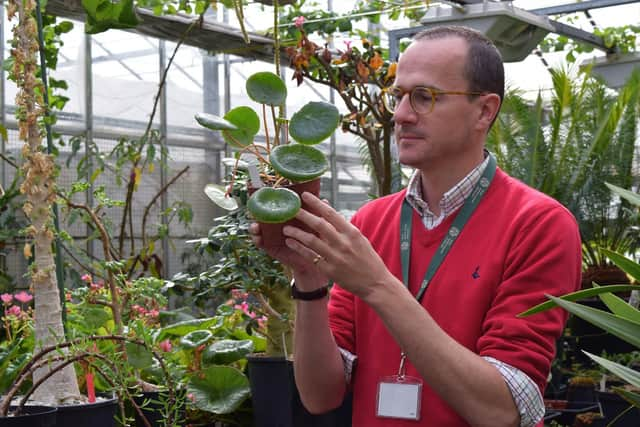70 new species of plants found in a year by the Royal Botanic Garden Edinburgh
The list of species described for the first time by experts includes miniscule single celled diatoms to fungi, mosses and a single tree.
They are the result of research by the RBGE and its international partners around the world, in spite of the challenges posed by pandemic lockdowns.
Advertisement
Hide AdAdvertisement
Hide AdFound in 23 countries, from Australia, Bhutan and Cambodia to Ukraine, Vietnam and closer to home in the UK, the new species form part of a drive to catalogue all life on Earth.


Many have been grown-on for months and often years within specialist research facilities in Scotland before being formally named.
RBGE botanist Dr Mark Hughes, who specialises in tropical biodiversity, said: "Every time we describe a species as new to science we are recognising the international obligation to fulfil objectives for the Global Strategy for Plant Conservation.
"The ultimate aim is to ensure all plant and fungal diversity -- on which all life as we know it depends -- is documented and understood.
"Time is not on our side. Human activity combined with climate change and other natural disasters mean habitats are being eradicated at unprecedented levels and plants are disappearing before they can be described, let alone understood.
"Giving plants a scientific name is the first step to ensuring their future, that of their habitats and the humans and animals to benefit from their very existence."
Herbaceous plants make up the greatest number, with 38 including 18 begonias, 13 gingers and four gesners, all from the threatened wet forests of Bhutan and Southeast Asia. Some are known only from a few individuals, making them both new and also endangered.
Among them is Begonia bhutanensis, a delicate specimen tended by conservation horticulturists in the research glasshouses at RBGE since 1986.
Advertisement
Hide AdAdvertisement
Hide AdThe breakthrough in its identification came after Dr Hughes received a chance email from a colleague in Bhutan who was trying to identify an unusual looking begonia from the eastern ridges of the Himalayas.
Dr Hughes said: "Studying the photographs, I realised this was a plant also growing here in Edinburgh, which we had not yet identified.
"From that point we developed a collaborative approach to studying the specimens, finally gathering the data required to confirm it was a species not previously known to science.
"Provisionally, Begonia bhutanensis has been assessed as Critically Endangered according to IUCN criteria because only three individuals have been seen in their natural habitat.
"They are growing near a road, which may be widened at some point, and this brings new importance to those conservation specimens growing here in Edinburgh and also at the botanic garden in the Bhutanese capital of Thimphu."
Other Begonia species described last year include one from India, one from Thailand, five from Colombia and nine from Indonesia.
An unusual ginger species from the Philippines was scientifically named Hornstedtia albomucronata thanks to insights revealed through access to advances in DNA barcoding, which allowed identification of its closest relatives.
Comments
Want to join the conversation? Please or to comment on this article.